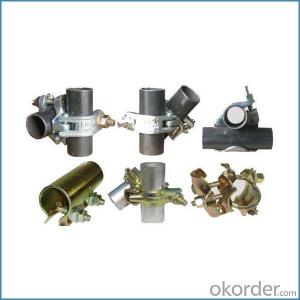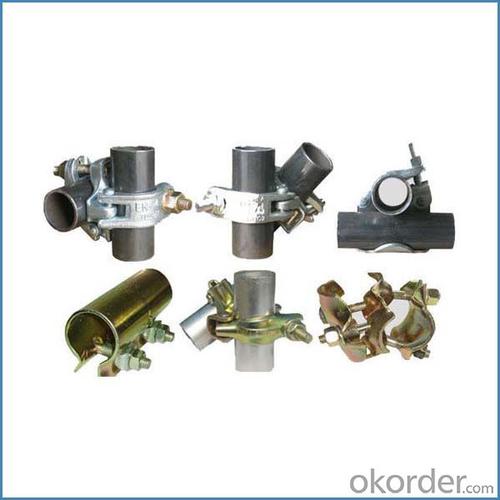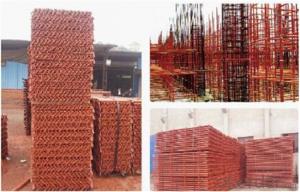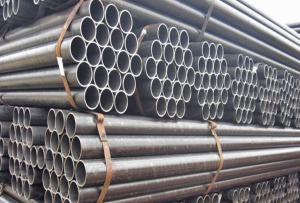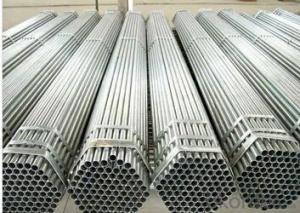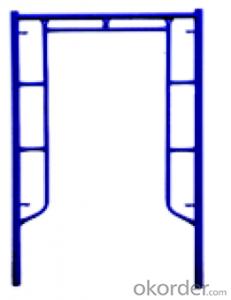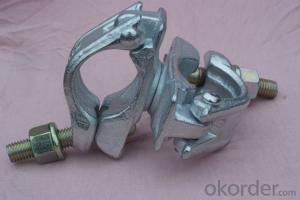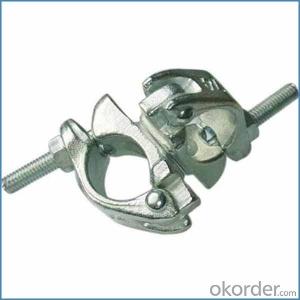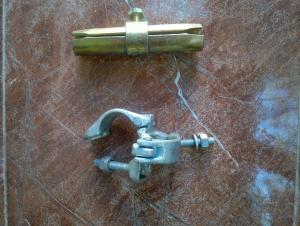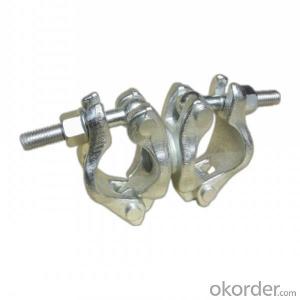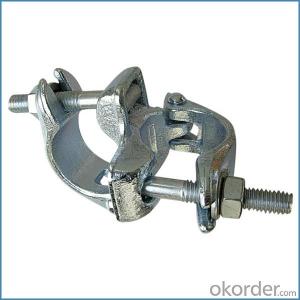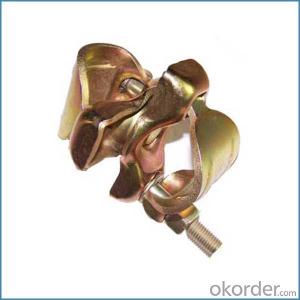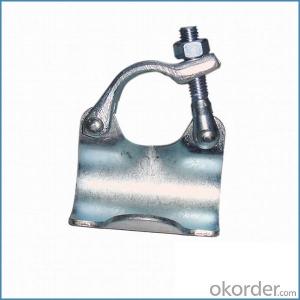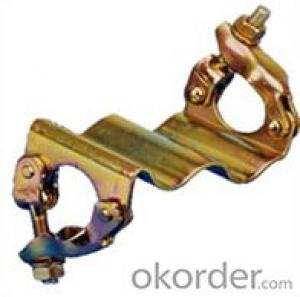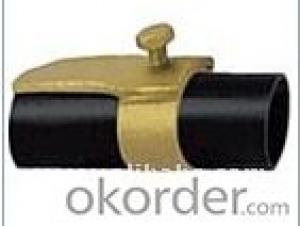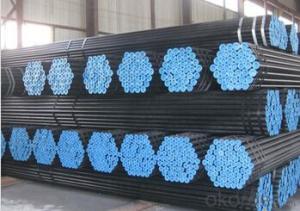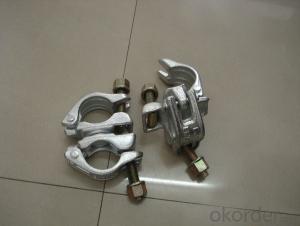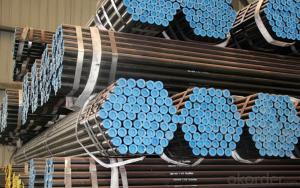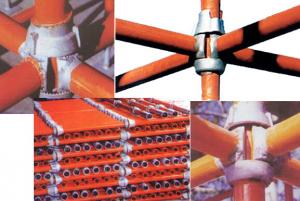Scaffolding Coupler Clamp british German Forged Type
- Loading Port:
- Tianjin
- Payment Terms:
- TT OR LC
- Min Order Qty:
- 1000 kg
- Supply Capability:
- 100000 kg/month
OKorder Service Pledge
OKorder Financial Service
You Might Also Like
Scaffolding Coupler Clamp british German Forged Type
Description
1.The scaffolding coupler is always used to connect the steel pipe as scaffolding system.
2.The often used coupler is swivel coupler and righ angle coupler .
3.We can provide types of scaffolding coupler according to your requirement.
4.Couoler can fix the 48.3mm scaffolding steel pipe tightly and make the whole scaffolding system more steadily.
Feature
(1)Excellent Anti-Breaking—Cold Pressed Steel
(2)Outstanding Resistance Deformation
(3)Strong Anti-Dropping Ability
Photo
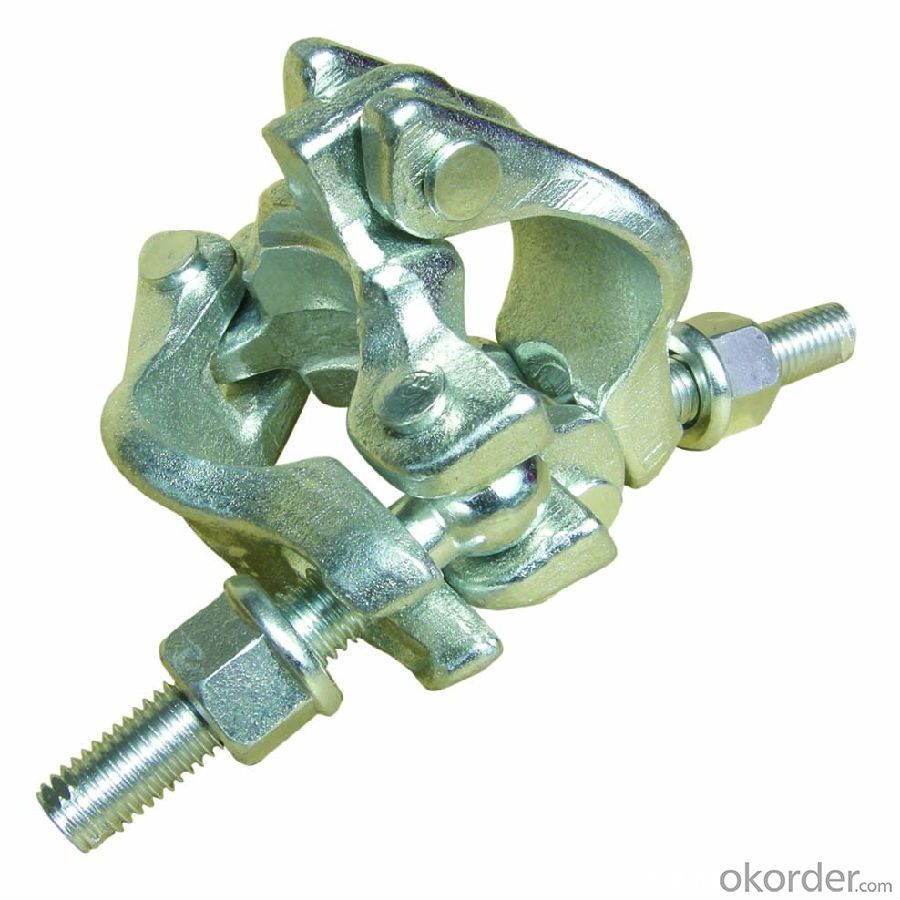
Parameter
| Material | Q235,345steel |
| Size | 48.3mm*48.3mm |
| Surface finish | Galvanized |
| Weight | 1.1kg around |
| Standard | BS1139,EN74 |
| Package | 25pcs/bag,steel pallet |
| Manufacture | As per customer requirement |
| Market | Africa, South America, the Middle East and Asia |
FAQ
Q: Are you a factory or trading company?
We are a state-owned corporation in China,dealing with various kinds of building materials.We have our holding subsidiaries.
Q: Where is your factory located? How can I visit there?
Our factory is located all around China.
Q: Can I get some samples?
Sample is free, customer only pay freight for the first time.
Q: Delivery?
10-30days. (5-15 containers)
Any question,feel free to contact us.
- Q: Can steel tube couplers be used in scaffolding projects with uneven or sloped surfaces?
- Yes, steel tube couplers can be used in scaffolding projects with uneven or sloped surfaces. Steel tube couplers are designed to connect steel tubes together, providing a secure and strong connection. They are versatile and can adapt to various angles and surfaces, including uneven or sloped ones. By using adjustable couplers, the scaffolding can be easily adjusted to fit the specific requirements of the project, ensuring stability and safety. It is important to ensure that the scaffolding is properly constructed and that the couplers are tightened securely to maintain the structural integrity of the scaffolding.
- Q: What are the typical weight limits for steel tube couplers?
- The weight limits for steel tube couplers can vary depending on the specific design and quality of the coupler. However, in general, steel tube couplers are capable of handling significant weights. For smaller and standard-sized steel tube couplers, the weight limits can range from 500 pounds (227 kilograms) to around 2,000 pounds (907 kilograms). These couplers are commonly used for various applications such as scaffolding, construction projects, and temporary structures. For larger and heavy-duty steel tube couplers, the weight limits can be much higher, often exceeding 5,000 pounds (2,267 kilograms) or more. These heavy-duty couplers are typically used in industrial settings, heavy construction projects, and applications that require superior strength and load-bearing capacity. It is important to note that the weight limits for steel tube couplers should always be determined and specified by the manufacturer or supplier. It is crucial to comply with these limits to ensure the safety and stability of any structure or system that utilizes steel tube couplers.
- Q: Are steel tube couplers suitable for scaffolding projects with limited space?
- Yes, steel tube couplers are suitable for scaffolding projects with limited space. Steel tube couplers are compact and versatile, allowing for easy assembly in tight spaces. They are designed to securely connect steel tubes, providing a strong and stable structure for scaffolding. Additionally, steel tube couplers offer flexibility in adjusting the height and configuration of the scaffolding, making them ideal for projects with limited space where precise positioning is required.
- Q: Are steel tube couplers resistant to wear and tear?
- Yes, steel tube couplers are highly resistant to wear and tear. They are designed to withstand heavy loads, extreme conditions, and repetitive use without compromising their structural integrity. The durability and strength of steel make these couplers reliable and long-lasting, reducing the need for frequent replacements or repairs.
- Q: Are steel tube couplers resistant to UV exposure?
- Yes, steel tube couplers are generally resistant to UV exposure. Steel is a durable material that can withstand a wide range of environmental conditions, including exposure to ultraviolet (UV) radiation from the sun. However, it is important to note that the level of resistance may vary depending on the specific type of steel used and the quality of the protective coatings applied to the couplers. Additionally, prolonged and intense UV exposure can gradually degrade the protective coatings and potentially lead to some level of corrosion or discoloration over time. Therefore, it is recommended to regularly inspect and maintain steel tube couplers to ensure their long-term durability and performance.
- Q: Are steel tube couplers suitable for scaffolding projects with high vibration or dynamic loads?
- Scaffolding projects with high levels of vibration or dynamic loads are generally unsuitable for the use of steel tube couplers. Although steel tube couplers are commonly employed in scaffolding due to their versatility and easy installation, they may not possess the required stability and strength for applications with significant vibration or dynamic loads. When exposed to such conditions, steel tube couplers can experience fatigue and stress-related issues, which may result in potential failure and compromised safety. The repetitive movement and stress on the couplers can cause them to weaken over time, thus compromising the overall integrity of the scaffolding structure. In situations where high levels of vibration or dynamic loads are present, it is often recommended to utilize alternative scaffolding systems such as cuplock or ringlock scaffolding. These systems incorporate specialized locking mechanisms that offer enhanced stability and resistance against dynamic loads. Furthermore, they possess superior load-bearing capacity and can better withstand the impacts caused by vibration or dynamic forces. It is essential to seek guidance from a professional scaffolding engineer or supplier who can evaluate the specific requirements of your project and suggest the most appropriate scaffolding system. Safety should always be prioritized, and selecting the suitable scaffolding system ensures the necessary structural integrity and reliability for projects with high levels of vibration or dynamic loads.
- Q: What are the weight limits for steel tube couplers in scaffolding applications?
- The weight limits for steel tube couplers in scaffolding applications vary depending on factors such as the type and size of the coupler, the thickness of the steel tube, and the specific regulations and standards followed by the scaffolding industry. It is important to consult the manufacturer's guidelines and adhere to industry best practices to ensure safe and proper usage of steel tube couplers in scaffolding applications.
- Q: Can steel tube couplers be used in corrosive environments?
- Yes, steel tube couplers can be used in corrosive environments, provided they are made from corrosion-resistant materials such as stainless steel or galvanized steel. These materials offer excellent resistance against rust and corrosion, making them suitable for use in environments exposed to moisture, chemicals, or other corrosive agents.
- Q: Can steel tube couplers be used for scaffolding structures that need to be resistant to vandalism or tampering?
- Yes, steel tube couplers can be used for scaffolding structures that need to be resistant to vandalism or tampering. Steel tube couplers are commonly used in scaffolding systems due to their durability and strength. They provide a secure connection between steel tubes, ensuring the stability and integrity of the scaffolding structure. The use of steel tube couplers eliminates the need for welding, increasing the resistance to tampering or vandalism. Additionally, steel is a robust material that is difficult to damage or manipulate, making it an ideal choice for scaffolding structures requiring resistance to vandalism or tampering. However, it is important to ensure that the scaffolding is properly designed and installed by qualified professionals to maximize its resistance against such activities.
- Q: Can steel tube couplers be used for both internal and external scaffolding applications?
- Yes, steel tube couplers can be used for both internal and external scaffolding applications.
Send your message to us
Scaffolding Coupler Clamp british German Forged Type
- Loading Port:
- Tianjin
- Payment Terms:
- TT OR LC
- Min Order Qty:
- 1000 kg
- Supply Capability:
- 100000 kg/month
OKorder Service Pledge
OKorder Financial Service
Similar products
Hot products
Hot Searches
Related keywords
